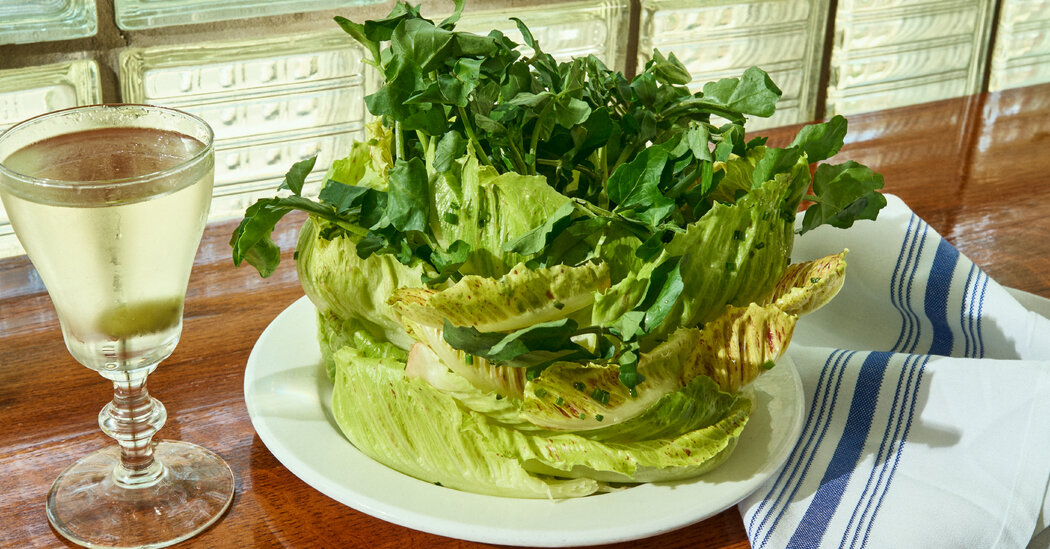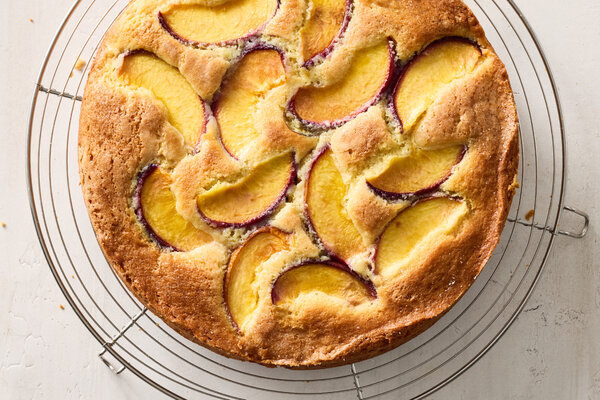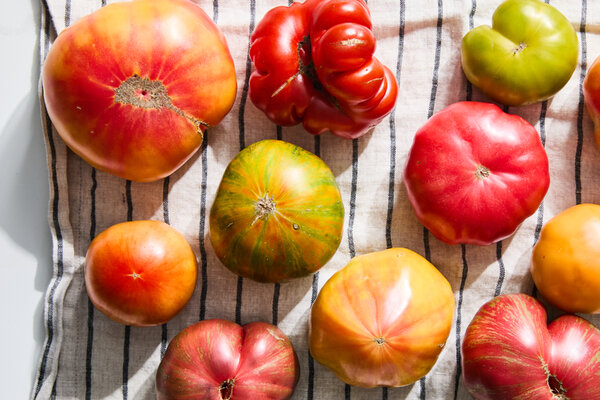The green salad at Meetinghouse, a modern pub in Philadelphia, is something of an architectural marvel.
Layer upon interlocking layer of gem romaine leaves slicked with spiky Dijon vinaigrette form a cylindrical tower, crowned by a tuft of watercress and minced chives. During a recent dinner service, it averaged about eight inches in height, but this salad skyscraper has been known to reach up to a foot.
“It’s bizarre to say because it’s this giant, beautiful salad,” said Andrew DiTomo, the chef and a partner at the restaurant, “but the way it came to be, why it’s big, and why we use full leaves is all about function.”
Mr. DiTomo said he created the salad with the intention that it would accompany the whole meal: Servers encourage diners to heap the leaves next to their hot roast beef sandwiches or pile them on fried turkey cutlets — “almost like salad nachos,” he said. It’s one thing to scoop crab dip with a romaine trowel at a come-as-you-are tavern, but what about on a date at a trendy bistro?
Lately, restaurants across the country are opting for the dramatic appearance, textural integrity and dressing adhesion of whole-leaf salads, despite the inelegance of disassembling and actually eating them.
At Bar Parisette in Chicago, ruffly, whole red lettuce leaves are tossed in Champagne vinaigrette, then showered with herbs and breadcrumbs. In Dallas, the New American restaurant Salum keeps tender butter lettuce petals intact in a spring salad with Texas citrus vinaigrette. The menu at Hayward in McMinnville, Ore., recently featured whole endive leaves and radish slices tossed in caper vinaigrette with shaved Gouda. Like most of the whole-leaf salads mentioned here, this one arrived with a steak knife.
“I think it should be socially acceptable to eat this type of salad with your hands,” said Allison Scott, the test kitchen director for the chef and restaurateur Rick Bayless. “I just hate eating a salad that’s inevitably going to foolishly poke out of the sides of my mouth or take forever to dismantle with a fork and knife.”
Kari Shaughnessy, the chef and owner of Hayward, thinks that the trend has to do with the visual appeal of whole-leaf salads. “It’s harder to make a salad that’s all chopped up look pretty,” she said. Opting for whole leaves is also practical: Delicate chicories and crisp, juicy gem lettuces wilt if precut at 4 p.m., when her restaurant preps for dinner service. Big leaves also cradle breadcrumbs, seeds, herbs and cheese more effectively.
“Our job is to make you the perfect bite,” Ms. Shaughnessy said.
Whole-leaf salads have graced fancy restaurant tables for decades — the wedge salad, an iceberg lettuce doorstop blanketed in blue cheese dressing and strewed with bacon and tomato bits being the most famous example. The original Caesar salad, invented in Tijuana, Mexico, in 1924, also featured whole romaine hearts.
In 2016, Bon Appétit magazine blurred the utensil-hand line when it started pushing “hand salad” recipes to the ire of the internet. Then came restaurants like Cozy Royale in Brooklyn, which serves deliciously messy gem wedges and hippie salads piled high with chunky romaine and fried chickpeas on hubcap-size plates.
Despite arguments from chefs and food writers that salad should double as a tortilla or “look as dreamy as if it fell from the sky,” the way Ms. Shaughnessy said she learned to make it at Frances in San Francisco, some diners won’t budge. Marie Tran-McCaslin, a general surgeon in Fresno, Calif., never cared much for the wedge, nor does she think salad should ever come with a knife. She prefers a “properly dressed” chopped salad.
“Why am I cutting lettuce like a steak?” she said. “Although, yes, the leaves stay crunchy when left whole, that can be achieved with dressing on the side, too.”
Abraham Salum, the Mexico City-born owner of Salum, takes particular pride in his keeping his Caesar old school, down to the whole blades of romaine, which are “better on the eyes with obviously more crunch, though you need a knife,” he said. However, breaking with tradition (and modernity), the kitchen will chop it for those who ask, including Mr. Salum’s husband. “On his diner profile, it says ‘please chop his Caesar.’”
Follow New York Times Cooking on Instagram, Facebook, YouTube, TikTok and Pinterest. Get regular updates from New York Times Cooking, with recipe suggestions, cooking tips and shopping advice.




